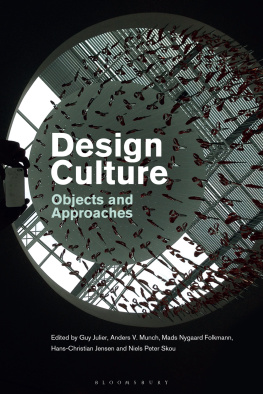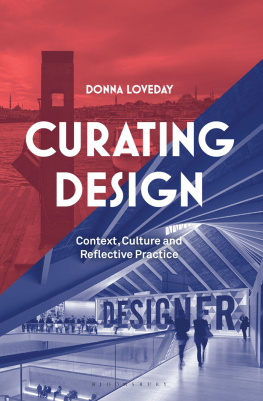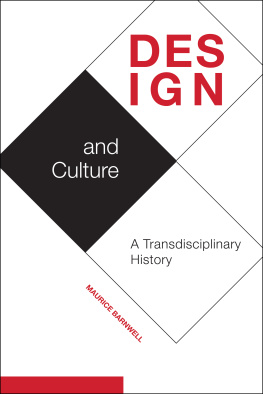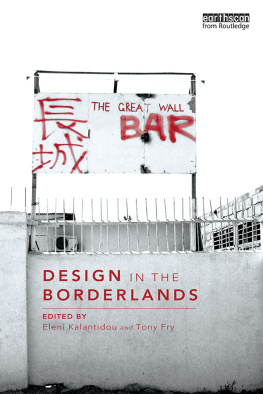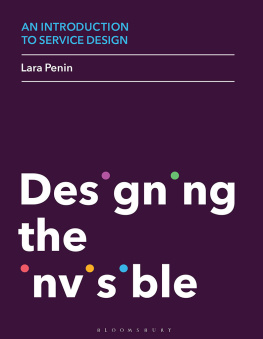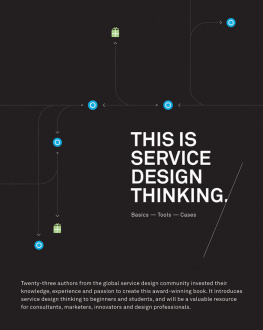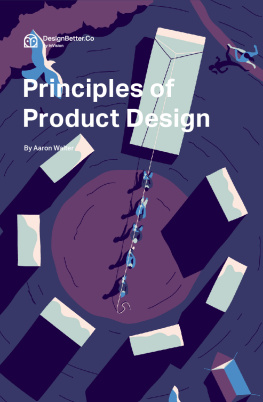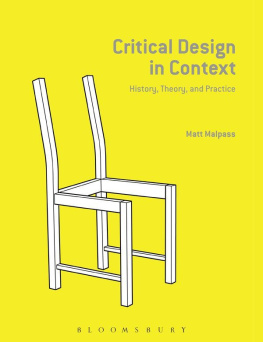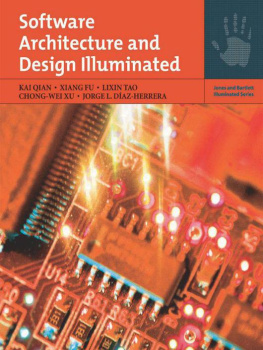Design Culture
Design Culture
Objects and Approaches
EDITED BY
GUY JULIER,
ANDERS V. MUNCH,
MADS NYGAARD FOLKMANN, HANS-CHRISTIAN JENSEN AND NIELS PETER SKOU

Contents
Kristin Vedel / Research and Development Unit, Department of Design, University of Nairobi, June 1971. |
Elbil / Norsk Jernbanemuseum. |
With kind permission of Habitat Retail Limited |
Alessandro Deserti and Francesca Rizzo. |
Alessandro Deserti and Francesca Rizzo. |
Toke Riis Ebbesen |
Silvio Lorusso & Sebastian Schmieg, 2012 |
Sara Kristoffersson |
Trine Brun Petersen |
Trine Brun Petersen |
Trine Brun Petersen |
Fritz-kola |
Fritz-kola |
Fritz-kola / photographer: Camilla Lorentzen |
Fritz-kola |
Fritz-kola |
Judith Glover |
Judith Glover |
Colin Tait / source: FHK Henrion Archive, University of Brighton Design Archives |
Gee and Watson / Design Council Archive, University of Brighton Design Archives |
Gabriele Oropallo |
iFixit |
Niels Peter Skou |
Niels Peter Skou |
Khler Design |
Ela Cindoruk |
Kunter ekerciolu |
Koray Gelmez |
Private Archive Des Cressonnires, Belgium |
Studio Formafantasma |
Studio Turbo |
Danah Abdulla , Brunel University London, UK
Leah Armstrong , University of Applied Arts Vienna, Austria
Alessandro Deserti , Politecnico di Milano, Italy
Toke Riis Ebbesen , University of Southern Denmark, Denmark
Kjetil Fallan , University of Oslo, Norway
Mads Nygaard Folkmann , University of Southern Denmark, Denmark
Judith Glover , independent scholar, UK
Ben Highmore , University of Sussex, UK
Hans-Christian Jensen , University of Southern Denmark, Denmark
Guy Julier , Aalto University, Finland
Harun Kaygan , Middle East Technical University, Turkey
Sara Kristoffersson , Konstfack, Sweden
Anders V. Munch, University of Southern Denmark, Denmark
Gabriele Oropallo , University of Oslo, Norway
Sarah Owens , Zurich University of the Arts, Switzerland
Joana Ozorio de Almeida Meroz , Vrije Universiteit Amsterdam, Netherlands
Trine Brun Petersen , University of Southern Denmark, Denmark
Francesca Rizzo , Politecnico di Milano, Italy
Katarina Serulus , University of Antwerp, Belgium
Niels Peter Skou , University of Southern Denmark, Denmark
The term design culture has emerged into regular academic and professional usage since around 2000. This has opened out in multiple ways, reflecting not just the varying locations where it is used and co-opted but also the different functions it carries. Placing itself across the Arts, Humanities and Social Sciences, it foregrounds the study of design in contemporary societies, paying attention to the networks and relationships between the domains of design practice, production and everyday life. This book is focused on opening it out for inspection through case studies and theoretical explorations.
Sharing some approaches and, indeed, much of its geniality with related fields of discourse and scholarly study, we nonetheless claim some distinctive territory for Design Culture studies as an academic focus of study. Design History has developed since the 1970s, broadening its historical and geographical scope, while maturing its own historical methods and key arenas of interest. Contrastingly, Design Culture focuses intensively on designs contemporary manifestations, seeking historically grounded understandings that are, nonetheless, relevant to emergent fields of scholarly enquiry and design practices.
Concurrently, Design Studies has grown from an initial concern with design processes to include its philosophies, theories and histories. Design Culture maintains a sharper emphasis on the deep understanding of design objects and their interrelationships with the multiple actors engaged in their shaping, functioning and reproduction. As such, Design Culture takes in and contributes to research and discourses in business and management studies, human geography, anthropology, media and communications studies and cultural studies, to name but a few of its cognate disciplines. It may be taken to be more outward looking and permeable in its disciplinary borders.
Design Culture goes beyond the classic dispute between Design Studies as understood in the United States and Design History as having emerged in the United Kingdom (Margolin 1992). This dispute has revolved around whether scholarship in Design Studies or Design History should serve design practice (as classically understood) or whether they should forge an independence as stand-alone discipline (Huppatz and Lees-Maffei 2013; Fallan 2013). Contrastingly, while this book serves as an investigation of scholarly possibilities within Design Culture studies, we do not necessarily take it to represent a bounded, singular and consistent discipline. And this is consonant with the field of design itself in contemporary society. It reaches into many parts of society and culture, and there are, now, many more actors, professions and scientific disciplines that are part of its constitution, rendering normative methods and epistemologies redundant. For example, the rise of so-called user-experience (UX) design since around 2010, that engages ethnography, HumanComputer Interaction (HCI), human factors and ergonomics, data analytics, digital coding and many other intersecting specialisms, underlines the ever shifting boundaries and porosity of what design might involve. Thus, in its scholarly practices, Design Culture shares, for instance, its very broad scope with Cultural Studies of design (Highmore 2009) and Material Culture studies. But it is also informed by shifting professions, institutions and debates of design the designer culture, if you like (Sparke 1986).
When Kjetil Fallan (2010) argues that Design History will get further impact on a broad field of historical and cultural sciences by striving towards a history of design culture or a cultural history of design, it is in close dialogue with Design Culture. The main scope of Design Culture is the more recent developments and constitutions forming our contemporary design culture rising since the 1980s and 1990s showing new densities, convergences, mediations and disciplinary constellations both inside and beyond the professional cultures of the designers. Historical antecedents or re-uses, however, may also come into view to open out conceptions of design culture. As an example, the recent so-called New Nordic Design seems to be a re-performance of the values of Scandinavian Design of the 1950s, but, at the same time, it is also driven by new kinds of firms and design-editors that produce and promote their outputs globally and depend on contemporary approaches to branding and new media platforms (Skou and Munch 2016).
It is not a coincidence that Design Culture studies has grown at the same time that conceptions of what design is and could have developed dramatically. We have moved beyond solely regarding design as concerned with singularities, be these spatial, material or visual or the serial reproduction of objects. Design, these days, also includes the orchestration of networks of multiple things, people and actions. This may, for instance, be found in brand strategies where an identity is deployed across several interlinked platforms. Systems that bring products and services together, such as cycle sharing schemes or smartphones, require complex interweaving of material and immaterial artefacts. Or, for example, it is manifested in city programmes where architecture, design and cultural planning are configured as part of urban boosterism (Julier 2005).

